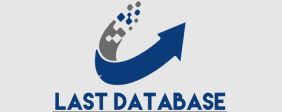How to build your content Distribution. That good old content marketer’s nightmare.
This time, you played the game.
You’ve uploaded your masterpiece, shared it on your social media to give it a boost, sent it to your newsletter subscribers, and… nothing. A flop.
This type of experience is extremely frustrating
but it has a silver lining: it reminds us that the best content in the world is nothing if it isn’t read by the audience it’s intended for.
Investing 100% of resources in content creation and neglecting distribution is a big risk.
Personally, content promotion was a huge pain in job function email database the neck for me for a long time (content creation was so much more interesting). Until I finally understood and accepted these three rules.
A content distribution strategy is necessarily tailor-made
Reusing techniques or tactics that have worked for how to use customer insights databases for targeted campaigns another company is a very bad idea.
#02 – Content promotion isn’t just a quick fix you throw at it after the fact. You’ll need to invest resources upfront, because the only levers that really work require building an audience, building a community, or building relationships at some point.
#03 – Experimentation is essential :
audiences, consumption patterns (and generally the competition) are changing too quickly for us to rest on our laurels and keep the same system for an entire year.
In this article, I would like to share with you some simple tips and actions to build a content distribution and promotion strategy tailored to your situation.
And these are just some of the ways you can reach your current customers
Ideally, you should go further and also engage with potential customers: those you can’t yet reach today. To do this, you can use exactly the same tools as startups or innovative companies that survey their targets before designing a product (browsing Quora gambler data and forums, participating in meetups, joining LinkedIn and Facebook groups, etc.).
Regardless of the solutions used, you need to understand the consumption patterns of your current customers: only then can you build your arsenal of levers and tactics adapted to these audiences.

